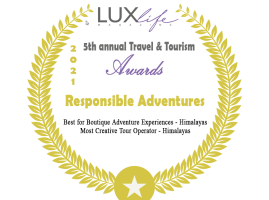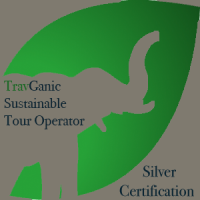The mental health benefits of a cycling holiday
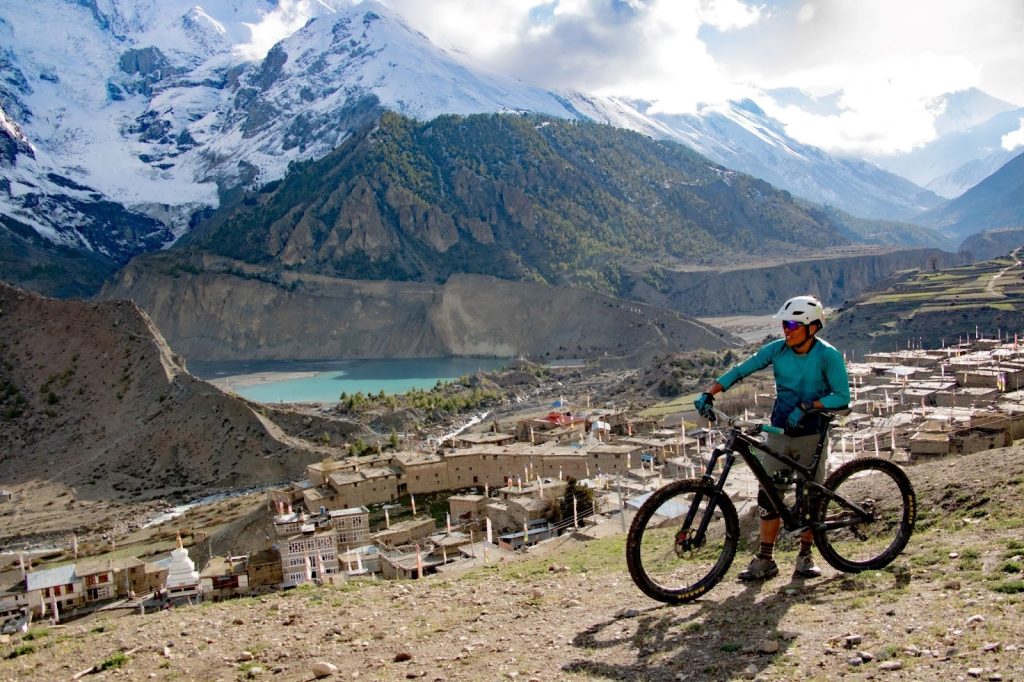
The mental health benefits of a cycling holiday Photo by Sunil Chandra Sharma on Unsplash It’s well known that exercise of any kind can be hugely beneficial for both your physical and mental health. Going on holiday in itself is greatly beneficial to our mental health, but when paired with this exhilarating sport you create a powerful healthy effect. Feeling the wind on your body as you speed down a hill, or the burn in your legs as you climb a mountain, just feels incredible. As an added bonus, cycling holidays are a very sustainable way to enjoy a well deserved break. If you’re looking for ways to reduce the carbon footprint of your holiday, loading your bikes and heading out to explore new horizons is a great option. Throughout this article, we will look at three big ways cycling can positively impact your mental health. Boost your mood There is no doubt about it. Just as runners get a “runner’s high”, cyclists get their cousin, the “cycling high”. This is one of the main reasons a lot of people take up cycling in the first place, and subsequently embark on international cycling adventures. It becomes a positive addiction. Cycling helps to pump blood quickly around your body, leading to a rapid release of endorphins and other happy hormones like dopamine, norepinephrine and serotonin. A holiday of any description has the power to take our minds away from the toils of daily life. But having an activity to focus on, such as cycling, is a great way to travel more mindfully and stay in the present moment. This can help to focus your mind on more positive thoughts, relieving stress and boosting your mood. Not to mention, if you’re the type of traveller who enjoys exploring the local area and engaging with different cultures when on holiday, cycling is a great way to see more than you might be able to on foot. Just hopping on your saddle and taking in the sights and sounds of a new destination does wonders for both your physical and mental health. Sleep more soundly If your circadian rhythm is out of whack, you’re not likely to be sleeping as well as you should. And it’s been proven that cycling regularly can help to synchronise your circadian rhythm. This, in turn, helps to lower your levels of stress hormones, which can make getting a good night’s sleep easier. In a similar way, exercise (when performed at certain times of the day) has also been shown to help our body clocks to realign with the new surroundings when travelling to a different time zone. You don’t have to take on a cycling marathon each day of your holiday to feel the benefits, either. Even a short ride each day will provide several benefits to your sleep health, helping you to wake up each day more refreshed and ready for another tour on two wheels.With its stress-busting and brain-building benefits, cycling is the perfect accompaniment for a holiday. Meet new people Everyone knows that cycling, or doing any exercise for that matter, is always more fun when you share the experience with others. Whether you’re with friends, in a group, or with family, coming together with like-minded people can improve your mental health to no end. A lot of cyclists choose to combine their passion with a holiday, and there are a number of guided road cycling holidays in France, Italy, and Spain. Some road cycling holidays are not for the faint-hearted though, so be sure to check before you book. For solo travellers, a cycling holiday is a great opportunity to meet new people who also enjoy exploring on two wheels. When it comes to family holidays, the kids are sure to love whizzing around on their bikes with their new friends, and it can be a great way to create lifelong memories. As you can see, there are plenty of ways that a cycling holiday can boost your mental health, as well as providing immeasurable benefits to multiple other aspects of your life. Remember to always run your bikes through a safety check before you set off, and research your route ahead of time to ensure it isn’t going to be too challenging if you have kids in tow.
Making Memories: Unique Birthday Celebration Ideas for Nepal Adventure Travellers
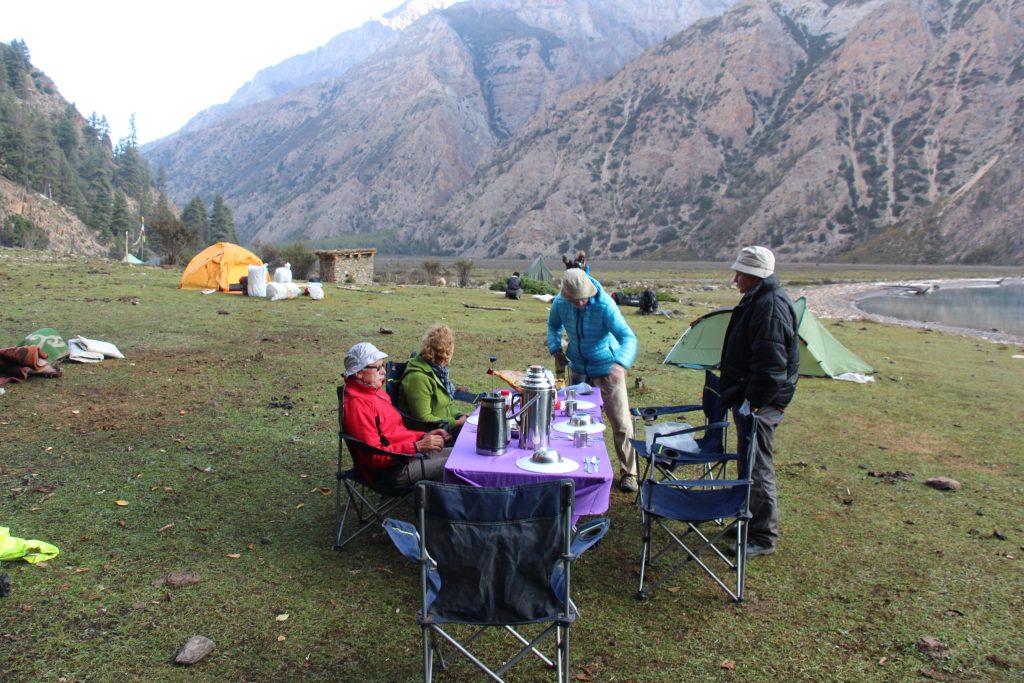
Making Memories: Unique Birthday Celebration Ideas for Nepal Adventure Travellers Birthdays are a special occasion for everyone, but what’s more remarkable is uniquely celebrating your birthday. If you’re an adventure traveller in Nepal, you’re in luck! Nepal is home to some of the most beautiful and adventurous destinations in the world, and what better way to celebrate your birthday than by exploring them? In this article, we will share some unique birthday celebration ideas for adventure travellers in Nepal. Tips for Planning a Safe and Fun Birthday Celebration Before we dive into the destinations, here are some tips to keep in mind when planning your birthday celebration in Nepal: Plan ahead: Nepal is a popular destination for adventure travellers, so planning and booking your activities in advance is essential to avoid disappointment. Dress appropriately: Nepal has a diverse climate, so check the weather forecast before you go and dress appropriately. Stay hydrated: The high altitude and physical activities can take a toll on your body, so drink plenty of water to stay hydrated. Respect the culture: Nepal is a culturally rich country, and it’s important to respect its customs and traditions. Follow safety measures: Adventure activities come with some risks, so ensure you follow all safety measures and instructions your guides give. Top Adventure Destinations to Celebrate Your Birthday in Nepal Trekking in the Annapurna region: Trekking in the Annapurna Circuit is one of Nepal’s most popular adventure activities. The trek offers breathtaking views of the Annapurna range and takes you through diverse landscapes, including lush forests, picturesque villages, and high-altitude deserts. You can celebrate your birthday in one of the tea houses along the trail, where you can enjoy a warm meal and a slice of cake. White-water rafting in the Trishuli River: White-water rafting in the Trishuli River is a thrilling adventure to pump your adrenaline. The river has rapids ranging from grade 2 to 4, making it suitable for beginners and experienced rafters. You can celebrate your birthday by camping on the riverbank, enjoying a bonfire, and stargazing. Paragliding in Pokhara: Paragliding in Pokhara is a popular adventure activity that offers breathtaking views of the Himalayas and the Phewa Lake. You can celebrate your birthday by taking a tandem paragliding flight with an experienced pilot and enjoying a bird’s eye view of the city. Bungee jumping in Bhotekoshi: Bungee jumping in Bhotekoshi is not for the faint-hearted. The 160-meter drop from a suspension bridge over the Bhotekoshi River will surely give you an adrenaline rush. You can celebrate your birthday by taking the plunge and enjoying a well-deserved drink at the on-site bar. Mountain biking in Kathmandu Valley: Exploring Kathmandu Valley on a mountain bike is a thrilling and exciting way to discover hidden gems and lesser-known trails. It could be a grand birthday celebration with friends, but always prioritize safety by wearing a helmet and adhering to safety guidelines. In addition to mountain bikes, you can rent mountain bikes to explore remote areas that are not easily accessible by car or public transportation. Family-Friendly Activities to Enjoy in Nepal: Ideas for Kids and Parents If you’re travelling with children, there are plenty of family-friendly activities in Nepal. Here are some ideas: Visit a wildlife sanctuary: Nepal has incredible wildlife, including tigers, rhinos, and elephants. You can take your kids on a safari tour in Chitwan National Park or Bardia National Park and get up close to these magnificent animals. Take a cultural tour: Nepal is rich in culture and history, and a tour of some of the country’s most important cultural sites can be a great way to educate your children. You can visit UNESCO World Heritage Sites like Kathmandu Durbar Square, Swayambhunath Stupa, and Boudhanath Stupa. Participate in a cooking class: Nepal has a rich culinary tradition, and participating in a cooking class can be a fun and educational activity for kids. They can learn how to make momos, dal bhat, and other traditional Nepali dishes. Visit a local market: Visiting a local market is a great way to expose your kids to different cultures and traditions. They can see how locals shop for groceries, try different foods, and interact with locals. If you’re searching for a fun and unique way to celebrate your kid’s birthday, you can contact us via email. We will make your birthday celebration even more exciting and memorable. Safety measures: Adventure activities come with some risks, but you can minimize them by following all safety measures and instructions from your guides. Here are some safety measures to keep in mind when participating in adventure activities in Nepal: Wear appropriate gear: Make sure you wear proper equipment for the activity you’re participating in, including helmets, harnesses, and life jackets. Listen to your guides: Your guides are experienced professionals who know the terrain and the risks involved. Make sure you listen to their instructions and follow them. Stay hydrated: The high altitude and physical activities can take a toll on your body, so drink plenty of water to stay hydrated. Know your limits: Adventure activities can be physically demanding, so it’s essential to know your limits and not push yourself too hard. Stay alert: Always be aware of your surroundings and potential hazards, such as uneven terrain or changing weather conditions. Equipment quality: We ensure all equipment is adequately maintained and in good working order before participating in any adventure activity. Choose reputable operators: When choosing operators for adventure activities, ensure they are reputable and have proper licenses and certifications. Celebrating your birthday in Nepal can be a unique and unforgettable experience. Plenty of adventurous activities exist, whether trekking in the Himalayan villages or white-water rafting in the Trishuli River. However, planning, dressing appropriately, staying hydrated, respecting the culture, and following all safety measures are essential. With these tips and destinations in mind, you’ll have a birthday celebration you’ll remember for years. So pack your bags, grab your friends, and prepare to make unforgettable memories in Nepal!
Sustainable Luxury Travel and Exclusive Local Experiences
Sustainable Luxury Travel and Exclusive Local Experiences Luxury travel was once associated with excesses like dancing and drinking in nightclubs until dawn, sleeping until noon with the air conditioning on full blast, and eating expensive dinners with imported food from around the world. Doubtlessly, some people will still partake in such activities, but more travellers have started to consider what effect their holidays will have on the environment. Just as many consumers have changed their habits with clothing, energy usage, and their own homes to reduce their carbon footprint, they crave travel in the same manner. Enter the world of sustainable luxury holidays. What is Sustainable Luxury? Sustainable luxury goes beyond reusing fluffy towels and turning off the air and lights when you leave your holiday residence. Of course, it involves travelling to your destination in the most environmentally friendly way, but once there, an eco-resort, eco-hotel, and eco-adventure experience should consider the local environment, economy, and culture when staffing and choosing furnishings. It’s also about local food made famous by the late Anthony Bourdain’s travel shows and newer offerings like One World Kitchen (streaming on fuboTV). Local products, food, and culture work together to produce a sustainable luxury experience. What to Look for When Finding Sustainable Luxury Options A sustainable hotel starts with a sustainable building. The materials and architecture used should reflect energy conservation, while any renovations should also incorporate eco-friendly materials. Look for the property’s commitment to sustainability on its website. However, sustainability also means delivering the luxury experience with the least damaging environmental effects. Look for the following characteristics: Room amenities like water carafes, bedding from local artisans, organic toiletries, and designer recycled writing pads Local culture on display through wall art, sculptures, etc., plus craft and cooking classes Hiring staff locally Organized trips to local food markets and native artisans Locally sourced sustainable foods in facility restaurants
Three perfect reasons to take a yoga retreat

Three perfect reasons to take a yoga retreat Whether you have developed an ‘at home’ yoga practice, attend classes at a studio, gym, or church, or participate in outdoor events, retreats are a unique opportunity to unplug and slow down so that you can develop a deeper connection to your inner Self. Take yourself on a yoga retreat! Immersion is key A retreat not only drops away the day-to-day to-do’s like cleaning, cooking, running errands, and looking after others, but it also supports you in energetic ways. We have picked a spot that is immersed in nature. When nature surrounds you, it softly encourages taking a deeper breath and provides enough space for a long exhale. Let. It. Go. (whatever “it” may be). We chose the location of the Blue Ridge Mountains for its epic beauty and vibrant nature. You are choosing to create more time and space to immerse yourself in self-inquiry. To inquire within while being held by the support of the environment is an added plus. Imagine a weekly retreat routine that is geared towards balance. Every day is curated to return to your health, healing, and a pure power source. Does that not sound pretty great? Community Leaping to join a retreat brings you together with like-minded people. When meeting new friends from new places and diving into a group experience – a specific type of bond happens within each tribe. I have witnessed, time and time again, deeply formed friendships that have lasted a lifetime from retreat weeks. These new pals can become a sounding board to share your evolving yoga practice’s ongoing experiences. That support is vital when moving through the victories and the challenges of life. Consciousness is contagious, and we are part of a community of over 35 million Americans that are now practising yoga. Waking up Diving deeper into the study of yoga and meditation can wake up the nervous system in exciting ways. When you are in the same life routine daily, all the layers of Self become somewhat “bored”, for lack of a better word. With an immersion into yoga and meditation practices while on retreat, you are physically creating new neural pathways in the brain. Each day a new path, a new method, a unique experience as you are guided towards balance. Our retreat offers various yoga styles for all levels and abilities and many different perspectives of these ancient teachings. As you “wake up” your body, mind, and spirit, as a result, you may learn new ways to approach life; playful, curious, and with more presence. Join me and my colleague, Jen O’Sullivan, for our Return to Source Yoga Retreat from May 10-16, 2019, where we will share time-tested yoga methods and contemporary approaches to self-inquiry to help you connect to the spark of your inner wisdom. You can expect nourishing Self-Awakening, Yin, and Restorative Yoga practices, guided meditations, reflective exercises, and many opportunities to partake in the amenities at the centre, including kirtan and quiet walks in nature. Stacy Seebart is an experienced yoga teacher, massage therapist, and educator. Her yoga journey began at the Nosara Yoga Institute (NYI) in Nosara, Costa Rica, fourteen years ago. Stacy has trained yoga teachers around the world and was faculty of both Kripalu Center and NYI. Her approach is heart-centred, grounded, and transformative. This article originally appeared on the Art of Living Retreat Center’s Website.
Connect with Nature by Taking Yoga Outdoors
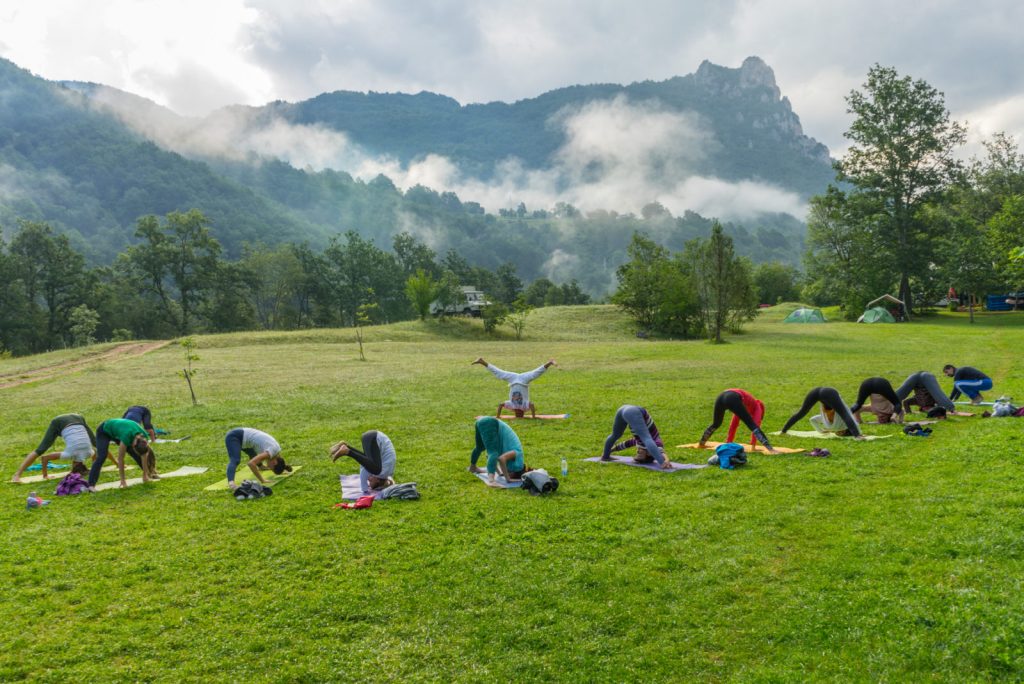
Connect with Nature by Taking Yoga Outdoors By Masie Barefoot-Judson My last name happens to be Barefoot, and it is probably not too surprising, for those reading this article, that going barefoot to practice yoga felt very natural for me. Over time I began to understand the feeling I remembered from childhood is what yogis call “grounding” or pulling in prana; feeling the presence of the earth through the soles of my feet, up to the palms of my hands, filling my cup and creating an abundance of prana within. Have you ever felt the earth beneath your feet – I mean, really felt it? Have you taken your shoes off and felt the cold soil or spread your toes wide to feel the surface of your yoga mat? What I remember most about my childhood is the freedom of going barefoot — playing without shoes and exploring wide-open spaces with my hands and feet. Although I have grown up, there is still a bit of this child practising yoga. My yoga mat may not physically be a wide-open space, but still… it gives me the chance to explore its textured surface on my skin with child-like delight. “Connecting with your natural setting is grounding and playful, and with practice, often meditative.” Perhaps you, too, have felt this connection with the earth moving into your practice. In my teaching style, the seasons play a vital role in the sequences I use. On warm days, I may notice that my students seem more limber but often feel tired by the end of the day; and on cooler days, I get requests to open the shoulders where we have cinched tension around the neck. Moreover, as we move through Spring, I create intense internal heat with long, slow movements, taking the time to linger and find ease within the movement. Spring is often the perfect time to take your yoga outdoors to bask in the sun or enjoy a nice shaded spot. Alternatively, forget your mat and leap into nature as your yoga mat. I have rested my back against boulders in tadasana, connecting with the mountain. The options are endless – imagine yourself in bidalasana, alternating between cat and cow poses. Alternatively, you could rise into a tree pose while reaching out and resting your palm on a tree’s trunk. Connecting with your natural setting is grounding, playful, and often meditative with practice. If you instead practice meditation instead of yoga outdoors, you can still practice outside and connect with nature. For example, you can sit at the base of a tree and use the canvas of your mind to grow upward like the tree. Feel your roots grow down into the soil from the bottom of your spine. Expanding our consciousness, we dive deeper into our connection to nature. May Day approaches, and the ancient celebration of Beltane marks Spring. The season is a chance to invite abundance, growth, and increase into your life. So I invite you to roll your mat outdoors this May 1st to explore your connection to Mother Earth and draw on the seasons as you expand your yoga lifestyle. I also invite you to play like a child and have fun. This article originally appeared on the Art of Living Retreat Center’s Website. Check out our Trekking packages for Nepal, Bhutan, India, and Tibet.
Seven Steps to Success

Seven Steps to Success Wellness / By May McCarthy It is always interesting to see the differences between successful people who appear to be abundant, fortunate, and prosperous and seem tired, exhausted and struggling to make ends meet. Successful people know that it is crucial to set specific goals, consistently review them, focus on their skills, and act on opportunities to achieve them. They do not journey through life, reacting to every situation; they steer their course through life and expect good outcomes despite what is happening around them. We all want to be consistent in focusing on our goals, but that can be tough when life presents us with unexpected situations. For example, your boss might ask more of you at work; your children or spouse might need you to be home more often and available to attend important events; you might even feel like you do not have enough time for yourself to relax, have fun, and plan for the future. Before long, consistency can seem like an unobtainable dream. Often during a crisis, competitive pressures, and family obligations, we can feel overwhelmed and forget to focus on our goals’ desired outcomes rather than our situations’ circumstances. We can listen to the news, read industry reports, and hear colleagues who describe probable and dismal outcomes that they say are inevitable. The only way to keep yourself focused on the goals and results you want to experience is to follow a consistent daily routine that is deliberate in priming your brain for success in achieving your desired outcomes. Since 1982, I have had the privilege of growing six profitable companies in a variety of industries. In that time, I have learned that the most effective way to keep your goals in the forefront of your thoughts is to wake up 30 minutes earlier each morning to meet with your inner self. Treat your morning meeting with your inner self seriously. Hold your meeting in a space that is free of disruptions, and create a plan that you will follow. Ensure that you also have the necessary tools: an uplifting book that describes others’ successes in achieving their goals, a pen, and a notebook for you to write in. Read something that inspires you. Spend five minutes reading something uplifting to put you in a receptive mood. Then, as you read about others’ successes, your mind will look for ways to make those kinds of achievements familiar and routine for you. Suggested books to read are listed on the back of my book, The Path to Wealth. Write down what you are grateful for Spend up to 10 minutes writing a gratitude letter. Be thankful for the good things already in your life, as well as the things that you hope to have soon. Psychologists agree that gratitude and happiness help you be more focused and solve problems. Express gratitude for what you have, like health, family, and significant employment. Also, express gratitude for what you want as though you already have received it, harmonious relationships with family, friends, customers, and co-workers, and increased sales at work. The subconscious will then be directed to search for ways to help make these goals a reality. Read what you are grateful for out loud. Spend up to five minutes reading your letter out loud with emotion. Studies have shown that when we read something out loud, we anchor it into our subconscious, which will help us notice more possibilities to make our statements accurate. For example, remember the last time that you were planning to buy a new car? Didn’t you start to see that car on the road everywhere just before you purchased it? So your subconscious was helping you to notice possibilities to make that car yours. Visualize reaching your goals Spend up to five minutes with your eyes closed imagining what it will be like to have your goals realized. What will you be experiencing, and how will you feel? Who will be celebrating with you? As you see yourself in your achieved goal, you will anchor the belief that it can be yours. Olympic athletes use this technique as part of their training. They see themselves making the shot, winning the competition, and celebrating with teammates and family. If you want to win and achieve your goals, see yourself doing so first. One of the world’s greatest golfers, Jack Nicklaus, never took a shot, not even in practice, without having a clear, in-focus picture of it in his mind first. Author and motivational speaker Earl Nightingale put it perfectly when he said: “Whatever we plant in our subconscious mind and nourish with repetition and emotion will one day become a reality.” He knew that repetition would reap the rewards. At this point, you have spent 25 to 30 minutes with your inner self establishing your goals and giving your subconscious directions on what to focus on attaining. Now, go ahead and get your day started. After that, your subconscious will begin to do its job. Follow your intuition throughout the day. During each day, be on the lookout for leads, intuition, directions, and opportunities that will point you toward goal attainment. Some of these leads might not make sense, but as Steve Jobs said, “have the courage to follow your heart and intuition.” Take a step to do something, call someone who comes to mind out of the blue, or follow up on a gut instinct to go to a particular location. I once followed a gut instinct to drive 15 minutes out of my way in Cleveland and ran into a potential customer who later gave me a new contract worth over $400,000. In another example, I had a strong thought about my sister. I was led through a series of intuitive directions to have a spot on my leg removed, later diagnosed as malignant melanoma Clark’s level 3. Many famous and
How to Find Your Purpose and Passion for shifting Your Life
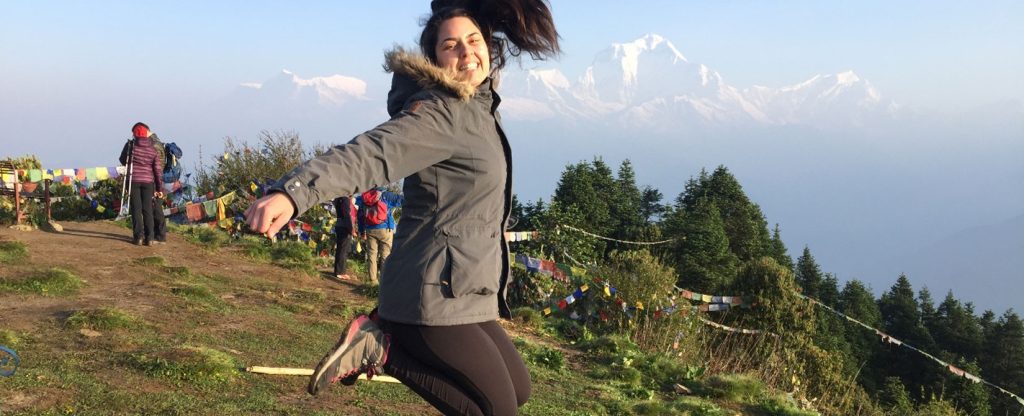
How to Find Your Purpose and Passion for shifting Your Life Spirituality / By Tracy Latz, M.D. & Marion Ross, PhD How to Find Your Passion and Purpose Wouldn’t you love to jump out of bed every morning filled with fire and enthusiasm for something? Perhaps you have been searching for that something for years or have settled for a more mundane life out of not knowing any better way. Maybe you feel that you have too many responsibilities to change course, do not deserve anything more significant, or have a fear of the unknown. Finding & Following your passion and purpose can be difficult, but consider it a journey, not an instant revelation. Go back in time… Consider taking an expedition into your past, for starters. What life plan got you to where you are now? Did you even consciously have a plan? Were you driven by the desire to be a dad, mom, nurse, doctor, plumber, an Indian chief, or accountant because it was lucrative or ‘Cool,’ to impress your family or friends, perhaps to pay the bills, or was it something you wanted to do? Did you choose a life of hiding your talents and brains so people would not expect too much of you? Were you afraid of success, or did you have a fear of success or failure? What choices led you to your current job, personal /family situation, hobbies, what you do in your downtime, etcetera? Take time to evaluate how you got where you are now to understand how you have been creating your life. Remember what Einstein said: “We cannot solve problems using the same thinking we used when we created them.” To discover your passion, you must expand, stay what you think, recognize what you wish to eliminate or change in your life and be motivated to do it. Your current thought process might have limited your options to provide you with a certain level of security, comfort, and survival, and maybe has given you a comfortable enough box to nest in, which you call “my life.” “Choose a job you love, and you will never have to work a day in your life.” – Confucius. To discover your real purpose in life, you must first rid your mind of all the parental and societal expectations that have filled your awareness since childhood. Then, sort out what is significant for you. To find your passion and purpose, recognize your gifts and abilities. Teaching, coaching, selling, painting, listening? Figure out what you are good at and what you enjoy doing. Define your interests! What makes your heart sing? What have been your hobbies since childhood? Do they give you a hint as to what lights your fire? What have you been afraid to pursue because of money or other barriers you have always wanted to do? What do you love to research on the internet? What section of the book store do you hang out in & which magazines do you enjoy reading? What inspires you? Please bring all of this to mind, write it down, and then refine the list after reviewing it in a few days. What have you fantasized about doing that seemed too crazy to pursue? Did you ever have a dream that you never realized, such as being a writer, journalist, or painter, which internal self-doubt or fear prevented you from pursuing? Take another look at your life dreams! It is never too late to create yourself anew. However, if you have an inhibiting belief that limits you from moving forward in your life, we have tools to help you remove the obstacles that cause a sense of being ‘stuck.’ Are you ready to find your passion and purpose and create a positive transformation in your life? Explore the roots of your self-sabotaging beliefs and behaviours at Shift Your Life: Drop Your Baggage. Love Your Life and Reach Beyond the Veil With Intuitive Art at the Art of Living Retreat Center from June 22nd-26th. Tracy Latz, M.D., M.S., is an Integrative Psychiatrist weaving together wisdom from Western medicine and alternative approaches to transforming anxiety, depression, and emotional trauma. Marion Ross, PhD, holds doctorates in Holistic Healing, Metaphysics, and Transpersonal Psychology and certifications in Medical Qigong, Qigong Healing, Robert Peng Certified Teacher Training, Energy Medicine, Mind-Body Medicine, and Sound Healing. This article was first posted on shiftyourlife.com, and Art of Living Retreat Center’s Website is republished with the authors’ permission. Check out our Trekking packages for Nepal, Bhutan, India, and Tibet.
The health benefits of ginger
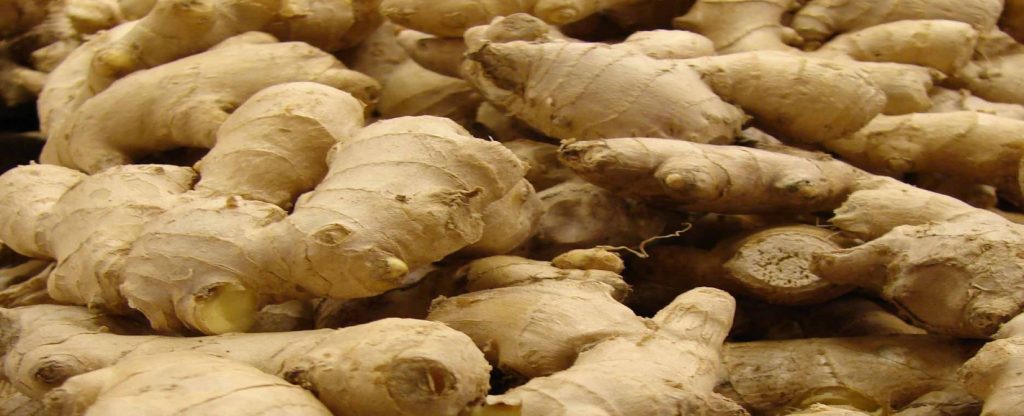
The Health Benefits of Ginger. Naturally, Wellness: The Health Benefits of Ginger The ancient plant ginger is grown all over the world. It is widely known for its culinary use and is found in various compositions. However, ginger is not just another spice that can be added to your cherished dishes. Ayurveda’s holistic healing approach knows the mind’s interrelations body and lauds ginger as a tonic that balances the body. The ginger root also provides a wide variety of health benefits. Ginger to help with weight loss Being overweight can reduce a person’s life expectancy by as much as twenty years. Nonetheless, research shows ginger may be conducive to weight control and curbing obesity by reducing various contributing elements such as glucose and body weight. Ginger for glowing skin. Thanks to its approximate 40 antioxidant properties, your skin is protected against free radical damage and protection against ageing. In addition, studies have shown that ginger helps reduce the synthesis of melanin, which reduces the skin’s ageing process. Keeps infections at bay. Ginger’s antimicrobial elements make it a potent tool for fighting infections, including bacterial infections like strep throat. In addition, it has been used as a treatment for various conditions, including flared sinuses, nausea, and flatulence. Ginger also supports the immune system during the flu and cold season. Reduce inflammation and pain. Some conditions, such as rheumatoid arthritis and fibromyalgia, can come with chronic pain because of inflammation, which is the body’s natural reaction to heal injuries. The longer the swelling continues, the more painful it can be, but ginger can provide alternative pain relief. Studies have shown that ginger reduces pain and inflammation due to the presence of essential oils and gingerols. Ginger for improved digestion. This well-known superfood can help you not only digest your food but can also provide control and enhance your appetite. Consuming ginger during lunch is a regular Ayurvedic practice; it helps facilitate the absorption of nutrients. Include ginger in your diet. Taking advantage of ginger’s health benefits is not difficult to do. Here are four easy ways how you can add ginger to your diet. 1. Ginger tea. This drink relieves stress and boosts your mood. In addition, ginger tea can provide calming relief when you have a cold. You can slice the ginger root thinly and boil it in water to get a substantial taste from the warm beverage. Ginger powder can be added to your hot drink, or a more natural way is to steep ginger tea bags in hot water. 2. Use ginger as a spice in your cooking. Ginger adds a little ‘bang’ to flavouring fruits, vegetables, and meat. Try boosting the taste of your vegetables, chicken, or even steak by adding some freshly peeled ginger to your dish. 3. Pickled Ginger. A pickled form of ginger can be added to your diet. The ginger pickle is an exceptional appetizer. It helps to neutralize your taste buds, especially after food with strong after tastes, such as raw fish or sushi. The health benefits of ginger stretch beyond its culinary appeal; it controls appetite, healing, and rejuvenation. You can adopt the Ayurvedic approach to broaden the balance from the mind to the body and leverage its numerous benefits by using ginger’s power. This article originally appeared on Art of Living Retreat Center Check out our Trekking packages for Nepal, Bhutan, India, and Tibet.
Retreats for Cleansing Eliminate Stress and Clear Your Body

Cleansing Retreats: Eliminate Stress and Clear Your Body Cleansing Retreats: Eliminate Stress and Clear Your Body Ayurveda, Organic food, Yoga / By Paige Reist Cleansing Retreats in North Carolina Even the best computer needs to be restarted every once in a while. But, between the toxins and chemicals in most modern western foods to the particles in the air we breathe to the stress that we put ourselves under at work and home, there are times when what you need more than anything is a chance to clear out the mind and body and start fresh once again. Cleansing retreats are designed to refresh and restore the body inside and out. Relaxing and fun, these retreats are an escape with a purpose, one where the end goal is to leave feeling you are more energized and ready to take on the challenges of the everyday world. What is a Cleansing Retreat? Several strategies can be used at these retreats. For example, at the Art of Living Center in North Carolina, our cleansing retreats are designed to detoxify the body using relaxing spa services, nourishing Ayurvedic techniques, and a venue that helps each attendee become more in touch with nature. For example, our Panchakarma Detox Retreat is a cleansing retreat that involves: Daily Ayurvedic Meals – Delicious meals cooked by trained chefs that nourish and detoxify the body. 10-14 Spa Treatments – A variety of relaxing and enjoyable spa treatments give you that sense of relaxation that eliminates tension and stress. Daily Progressive Yoga and Meditation – Trainered staff engagement in yoga and meditations helps bring you more in touch with your spirituality and develop mindfulness to address upcoming challenges. This is one of many different options for cleansing retreats. We also have our weekend cleanse retreats and Ayurvedic weight management program, combining cleansing with exercise and calorie control. Different Cleansing Retreats – Each a Great Experience Every cleansing retreat addresses detoxification and relaxation differently. However, the idea is the same throughout – to eliminate toxins in your body so that you feel alert, energized, and in many ways like a new person. It is to give you that restart that so many people need to feel more vibrant, energetic, and calm, able to work and play at your peak capacity and be ready to give all of your energy to any task you undertake. This article originally appeared on the Art of Living Retreat Center’s Website. Check out our Trekking packages for Nepal, Bhutan, India, and Tibet.
Ayurvedic food for a satisfying diet
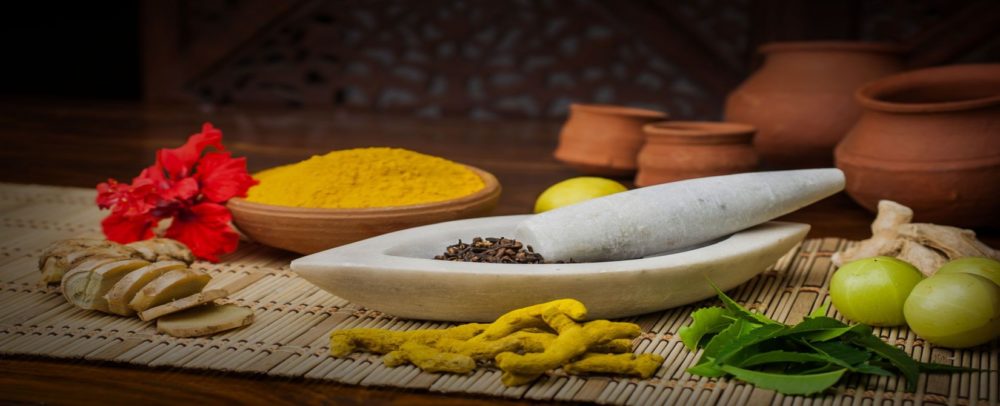
Ayurvedic food for a satisfactory diet Ayurveda’s Satisfaction Diet Ayurveda, Uncategorized, Wellness / By Dr Harrison Graves, MD Feel Better Today: Add More Tastes Have you ever eaten to the bottom of a bag of salt and vinegar potato chips only to find yourself unsatisfied? Have you ever dug into a pint of Ben and Jerry’s, only to find yourself craving something that’s missing? Welcome to the American diet. We attempt to use food, especially sweet and salty food, to find comfort in our country, yet find true satisfaction lacking. Ayurveda, the “Science of Life,” tells us that salt and sugar are only two of the six tastes the body needs to maintain optimum health and feel truly satisfied after meals. Ayurveda holds six tastes: sweet, sour, salty, bitter, spicy, and astringent. For optimum health, we need to taste them all every day. Each one has a specific energetic effect on the body. They can warm us up or cool us down. They can make us feel complacent or motivated. Taken together, the six tastes can lead the body and mind into perfect balance and create a sense of absolute satisfaction. Sweet and salty may work well to instantly alleviate the anxiety (excess Vata) that comes with 24/7 multitasking. However, eating only these tastes and poor quality, to boot — has dire consequences for physical and mental health. Mixing It Up Getting all six tastes does not mean creating equality in volume: a little salt goes a long way. Nor does it mean having a six-course meal at every sitting. “Keep it simple,” recommends Patti Garland, a master Ayurvedic chef and owner of Bliss Kitchen in Palm Desert, California. “Eat leafy green vegetables every day, and drink a lassi. Play around with spices — turmeric, cumin, coriander, and fennel will expand your palate instantly. Add quick-cooking lentils, split mung beans, or red lentils to your diet. Have a whole grain. Put it all together in a bowl, or serve it in individual dishes in one sitting or over a day. Try to have your big meal at lunch when digestion is strongest.” Curry and rice is a favourite dish served at our dining hall. Moreover, whatever you are eating, pay attention. If you are craving food, ask yourself what it is you want. Craving can come out of habit or tell you about something your body needs — which may not be food. For example, you could be craving love and connection. Once you find a bit of balance, your intuition will guide you to the right choices. Ayurveda is about conscious eating and pure satisfaction. Stress and Craving: The Vicious Cycle The entire American food industry has developed to serve and reinforce our cravings. They serve up sweet, sour, and salty and give it to us fast so we can return to doing whatever it was that created our imbalance. Then we get stressed and eat more sweet, sour, and salty. Such foods calm us, yes, but they make us feel heavy, tired, and depressed when we overdose. “Our culture is consumed with the disease of overnutrition: high blood pressure, diabetes, and obesity,” observes Thomas Yarema, MD, integrative physician and author of Eat-Taste-Heal. “We keep developing diet plans to deal with these problems,” says Yarema, “yet our success rates with heart disease and diabetes have been poor. Moreover, most of the diets we concoct to address the obesity problem — from low-fat to low-carb to grapefruit-only diets — fail in the end. As a result, we are confused about nutrition in modern times.” Yarema offers this easy way to understand dosha dynamics: “The tastes of sweet, sour, and salty convert energy into matter,” he says. “Bitter, pungent, and astringent turn matter into energy. The diseases in Western culture all have to do with a deficiency in energy and an excess of matter (bodyweight).” What is the cure, then, for what ails us? Where is a satisfaction to be found? First, balance the diet with more bitter, pungent, and astringent foods. Eating for Fulfillment In Ayurveda, when and where eating counts nearly as much as the what. Pay attention to the environment surrounding your food; you will be less likely to make poor choices or eat unconsciously. Here are some expert tips for eating in balance: Focus on the Food. “If you feel stressed, you might decide getting things done is more important than taking time for meals,” says Scott Blossom, yoga therapist and Ayurvedic practitioner. “But eating while multitasking only aggravates stress and imbalance.” Say, Grace. “For your body to taste the food, it has to know it is going to eat,” says Suhas Kshirsagar, director of the Kerala Ayurveda Academy. “Sit down; close your eyes before your meal; give thanks for your food. It is not just a religious tradition but a physiological one.” Then, empower your food with healing mantras (like Om Namah Shivaya) by chanting during food preparation and before eating. Adjust for Weather. You may notice that a hot, spicy soup tastes much better in winter than on a hot July day. If it is freezing outside, focus on warming foods. Cold drinks in the winter will inhibit your digestive fire. Mary Roberson, PhD, founder of the Ayurvedic Center for Healthcare in Oak Ridge, Tennessee, says, “You can use common sense, as informed by Ayurvedic theory, to bring yourself into harmony with your environment.” Rest and Digest Ayurveda suggests eating a more substantial meal with all six tastes between 10 a.m. and 2 p.m. A gentle walk after your dinner and a 10- to 15-minute rest gives the body a chance to digest. Guests were walking on a nature trail on campus. This article originally appeared on the Art of Living Retreat Center’s Website. Check out our Trekking packages for Nepal, Bhutan, India, and Tibet.










